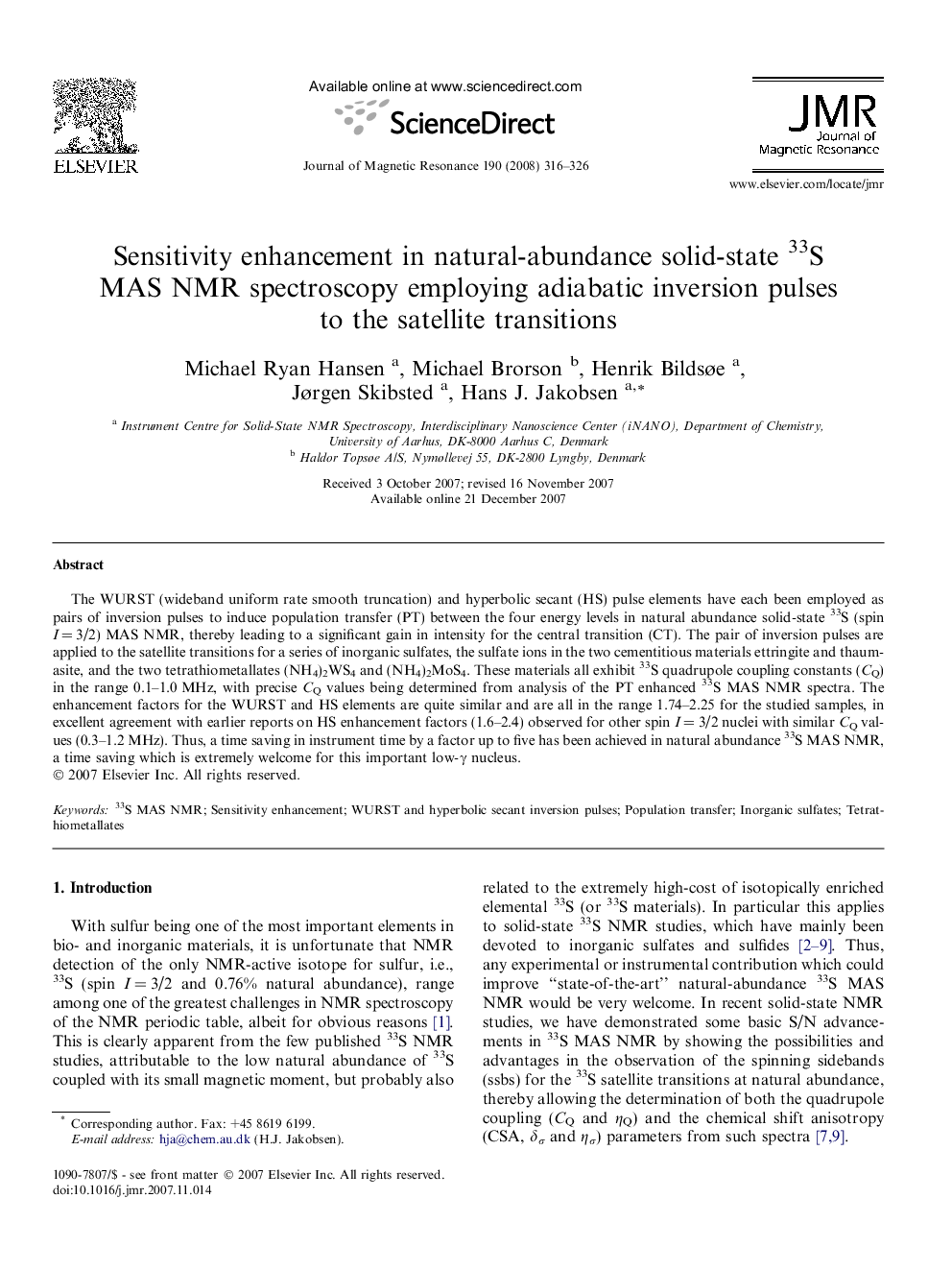| Article ID | Journal | Published Year | Pages | File Type |
|---|---|---|---|---|
| 5407262 | Journal of Magnetic Resonance | 2008 | 11 Pages |
Abstract
The WURST (wideband uniform rate smooth truncation) and hyperbolic secant (HS) pulse elements have each been employed as pairs of inversion pulses to induce population transfer (PT) between the four energy levels in natural abundance solid-state 33S (spin I = 3/2) MAS NMR, thereby leading to a significant gain in intensity for the central transition (CT). The pair of inversion pulses are applied to the satellite transitions for a series of inorganic sulfates, the sulfate ions in the two cementitious materials ettringite and thaumasite, and the two tetrathiometallates (NH4)2WS4 and (NH4)2MoS4. These materials all exhibit 33S quadrupole coupling constants (CQ) in the range 0.1-1.0 MHz, with precise CQ values being determined from analysis of the PT enhanced 33S MAS NMR spectra. The enhancement factors for the WURST and HS elements are quite similar and are all in the range 1.74-2.25 for the studied samples, in excellent agreement with earlier reports on HS enhancement factors (1.6-2.4) observed for other spin I = 3/2 nuclei with similar CQ values (0.3-1.2 MHz). Thus, a time saving in instrument time by a factor up to five has been achieved in natural abundance 33S MAS NMR, a time saving which is extremely welcome for this important low-γ nucleus.
Related Topics
Physical Sciences and Engineering
Chemistry
Physical and Theoretical Chemistry
Authors
Michael Ryan Hansen, Michael Brorson, Henrik Bildsøe, Jørgen Skibsted, Hans J. Jakobsen,
